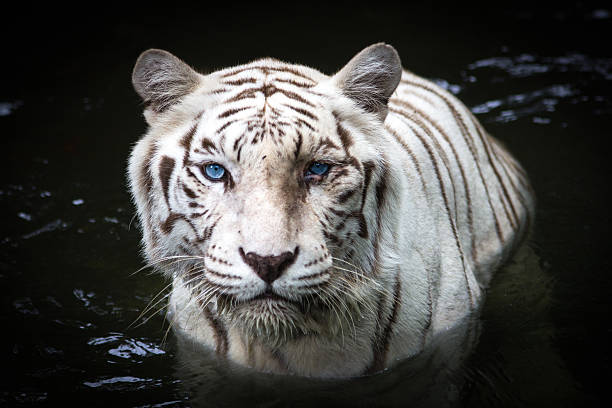Fascinating Facts About the White Tiger
The white tiger is one of nature’s most captivating creatures, known for its stunning appearance and striking blue eyes. A rare genetic variant of the Bengal tiger, the white tiger has fascinated wildlife enthusiasts and casual observers alike. Let’s explore some interesting facts about these magnificent animals.

1. Unique Genetic Variation
White tigers are not a separate subspecies; rather, they are a genetic variant of the Bengal tiger. The white coloration is caused by a recessive gene, which means both parents must carry the gene for a white cub to be born. This unique genetic trait results in their distinctive white fur with black or dark brown stripes, setting them apart from their orange-hued counterparts.
2. Rarity in the Wild
White tigers are extremely rare in the wild. Their striking color offers no camouflage in their natural habitat, making it difficult for them to hunt and survive. As a result, they are rarely seen outside of captivity. In the wild, their chances of survival are significantly lower, leading to the belief that there are fewer than 20 white tigers left in their natural habitat.

3. Powerful Predators
Despite their rarity, white tigers are just as powerful and skilled as their orange relatives. They are apex predators, relying on their strength and agility to hunt large prey such as deer and wild boar. Their keen eyesight and excellent hearing help them stalk and ambush their targets with precision.
4. Habitat and Distribution
White tigers are primarily found in the forests and grasslands of India, although their natural habitat has significantly diminished due to deforestation and human encroachment. Conservation efforts have been made to protect the remaining Bengal tiger populations, which also benefit white tigers, as their genetic traits come from this subspecies.
5. Captive Breeding Programs
In captivity, white tigers have become a popular attraction in zoos and wildlife parks. Many of these institutions participate in breeding programs aimed at increasing the population of white tigers. However, breeding white tigers can lead to health issues, as inbreeding often occurs to maintain the white coat. This has raised ethical concerns regarding the welfare of the animals involved.
6. Cultural Significance
The white tiger holds significant cultural value in various Asian cultures. In Hindu mythology, it is associated with strength, beauty, and grace. The animal is often seen as a symbol of power and protection, further enhancing its mystique.
Conclusion
The white tiger is an extraordinary animal that continues to capture our imagination with its beauty and rarity. While these majestic creatures are a symbol of nature’s wonder, they also remind us of the importance of conservation efforts to protect their habitats and ensure their survival. Understanding and appreciating the unique traits of the white tiger can inspire us to take action in safeguarding the future of these magnificent beings.






